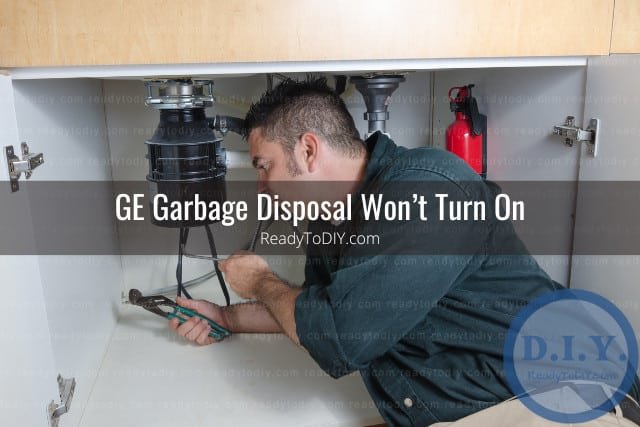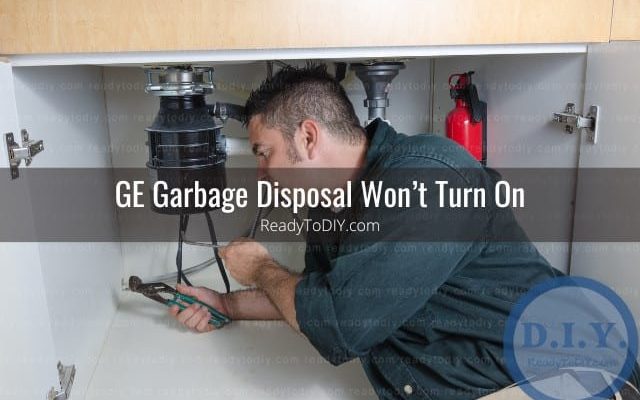
An “E2” error code on a GE garbage disposal typically indicates a motor issue — often overheating. Just like a car engine struggling up a steep hill, your disposal’s motor can overwork itself when it’s got too much on its plate. This can happen when the disposal is trying to grind up something it shouldn’t be or if it’s been running for too long without a break. The good news is, with a bit of understanding and regular maintenance, you can keep your disposal running smoothly and avoid seeing that pesky code ever again.
Understanding Why Garbage Disposals Show Error Code E2
To prevent the E2 error in the future, it’s crucial to understand what causes the issue in the first place. Imagine your garbage disposal as a small but powerful food processor. It’s there to help you grind up bits of food waste efficiently. However, when it starts to make a grumbling sound or abruptly stops working, that’s your cue that something’s amiss — much like when your car starts making a funny noise.
The E2 error typically appears when the garbage disposal’s motor is working too hard. This can result from trying to grind materials that are too tough or fibrous, like bones or hard fruit pits. These items can cause the motor to overheat as it struggles to pulverize them. You might also notice this error if you’ve mistakenly allowed non-food items to fall into the disposal. These issues are comparable to your vacuum trying to suck up a large toy — it just can’t handle it without causing a jam.
Keep these causes in mind when you’re using your garbage disposal. Treat your disposal with the same care as any other kitchen appliance. After all, you wouldn’t put rocks in your blender, right? Similarly, you should avoid putting anything too hard into your disposal. Paying attention to what goes down the drain can save you a headache later on.
Steps to Prevent Error Code E2
Now that we’ve covered what causes the E2 error, let’s dive into the steps you can take to prevent it from happening again. Think of these steps like giving your disposal a regular tune-up, much like you’d do for a beloved car to keep it running smoothly.
First, get into the habit of running cold water while using the disposal. Why cold water? Because it helps solidify any fats or grease, preventing them from coating the blades or the inside of your pipes. Remember, a cool flow is like a sports drink for your disposal, keeping it refreshed and lubricated during operation. After grinding is complete, let the water run for a few seconds to flush everything through the system thoroughly.
Second, be mindful of the quantities. It’s tempting to shove everything down at once, but your disposal is built more for endurance than speed. Feed it small amounts gradually instead of all at once. This gives the blades time to process each bit without getting overwhelmed. Think of it like feeding your dog — small bites are always better than heaping bowls.
Lastly, clean it regularly. Once a month, toss in a few ice cubes and a small lemon or orange peels, then turn on the disposal. The ice will help scrape away any buildup, while the peels will freshen things up. Consider it a spa day for your disposal — a little self-care goes a long way!
Long-term Maintenance and Best Practices
Preventing future E2 error codes involves more than just what you do daily; it requires a commitment to long-term maintenance. Consider setting a routine for checking your disposal’s overall condition. Treat it like you would any other major appliance, with regular check-ins and care.
Start by inspecting the disposal every few months. Check for any visible signs of wear, rust, or leaks. If your disposal is more than a few years old, it might be time to consult a professional to give it a thorough once-over. Think of this as bringing your car in for a periodic service — a professional can spot problems you might not see.
Consider using a specialized cleaner designed for garbage disposals. Many local hardware or kitchen stores carry solutions that can help keep your disposal running smoothly and smelling fresh. These cleaners are like vitamins for your disposal, providing the necessary ingredients to fend off future issues.
Finally, if your disposal does trigger an E2 code again, reset it by pressing the overload protector button typically found on the bottom or side of the unit. But remember, resetting is only a Band-Aid solution. If the problem persists, it may be time to call in an expert. Having a professional assess your disposal can prevent minor issues from developing into major headaches.
By incorporating these preventative measures into your routine, you’ll find that your GE garbage disposal remains an efficient and reliable part of your kitchen. Who knows? Maybe you’ll even become the go-to person for garbage disposal advice among your friends!
